Hazard pictograms
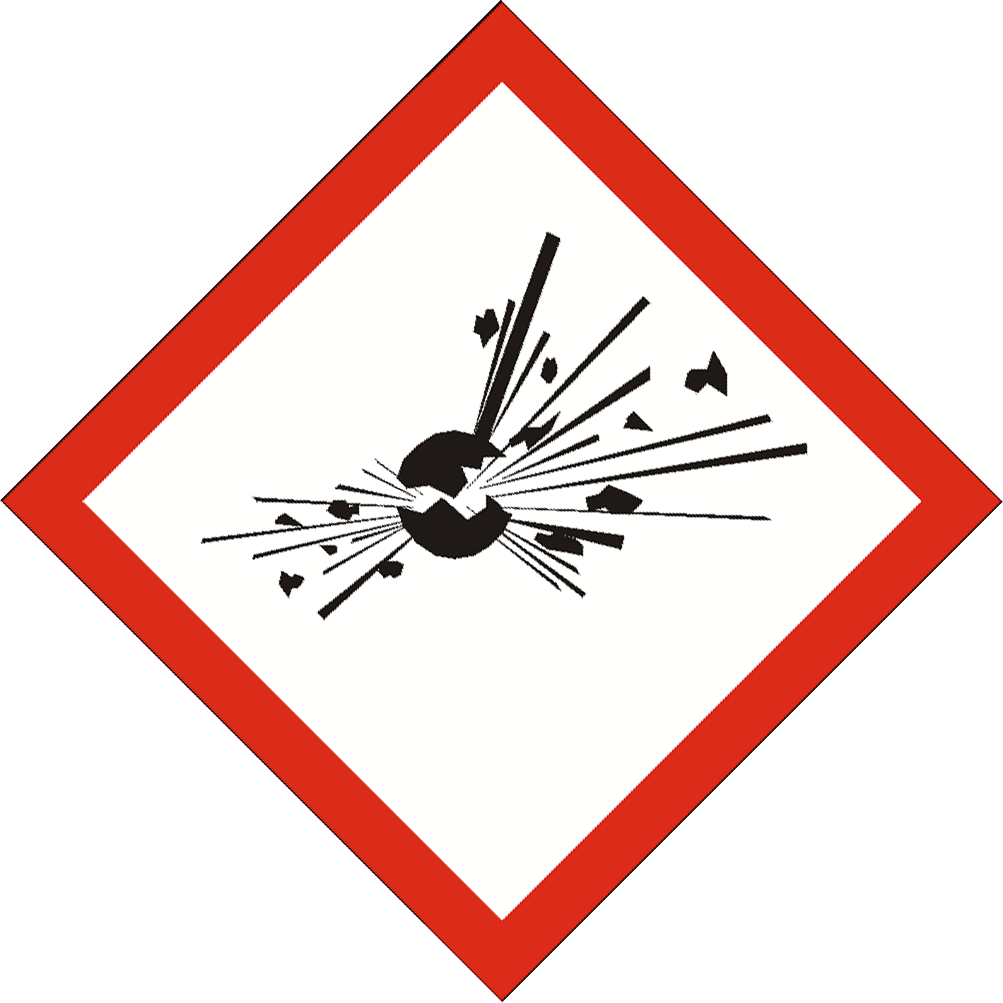 |
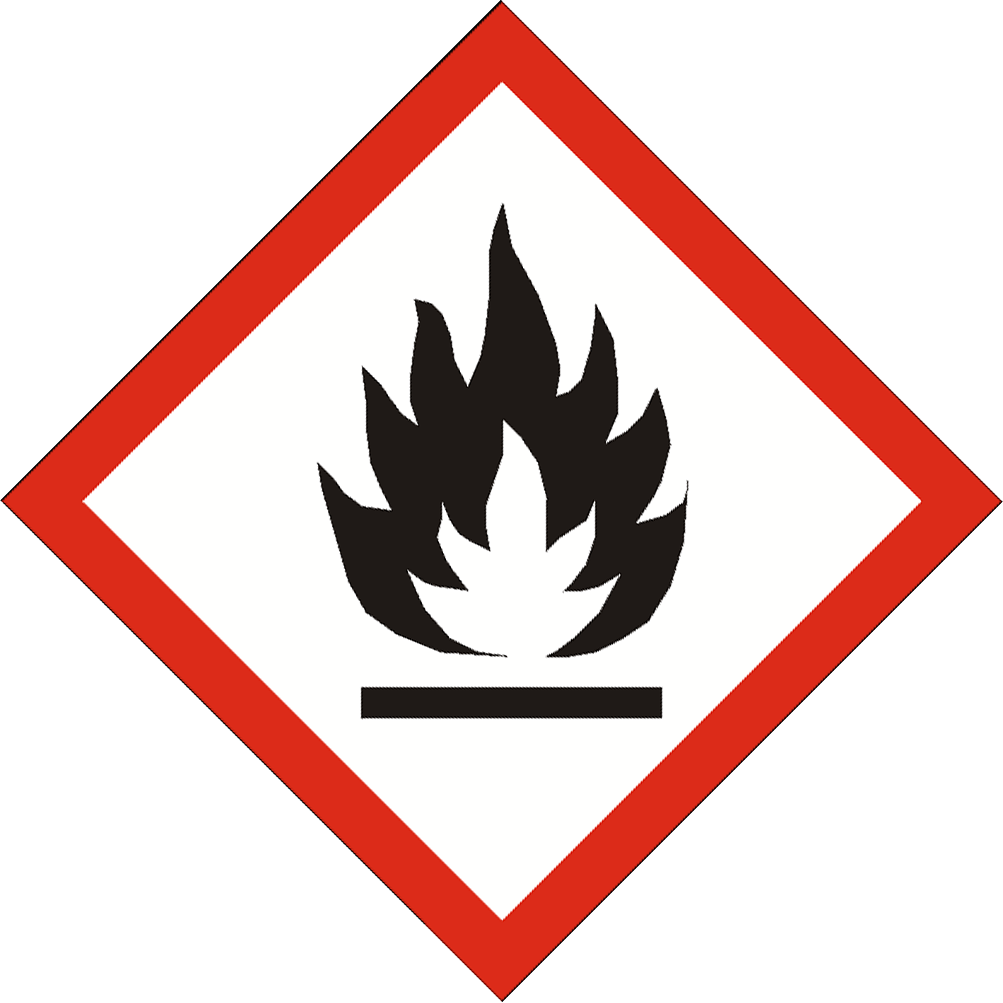 |
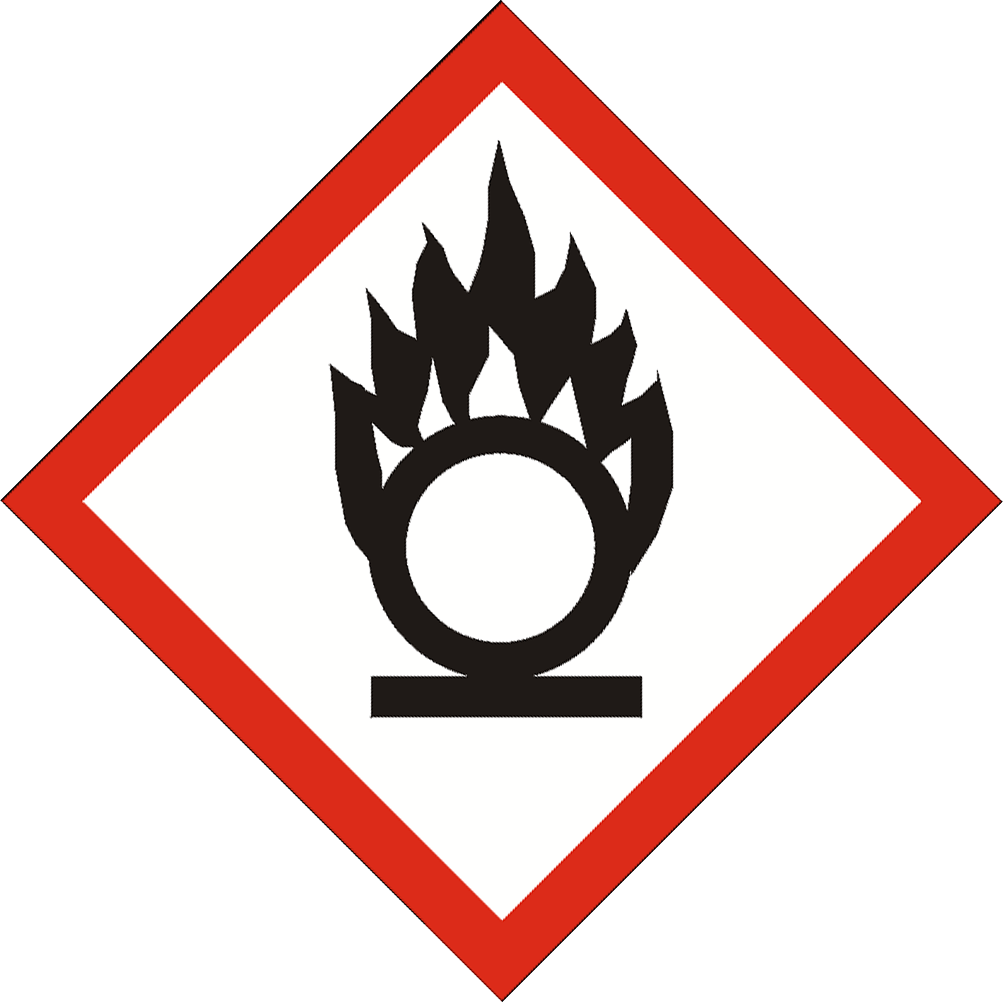 |
| GHS01 : Exploding bomb | GHS02 : Flame | GHS03 : Flame over circle |
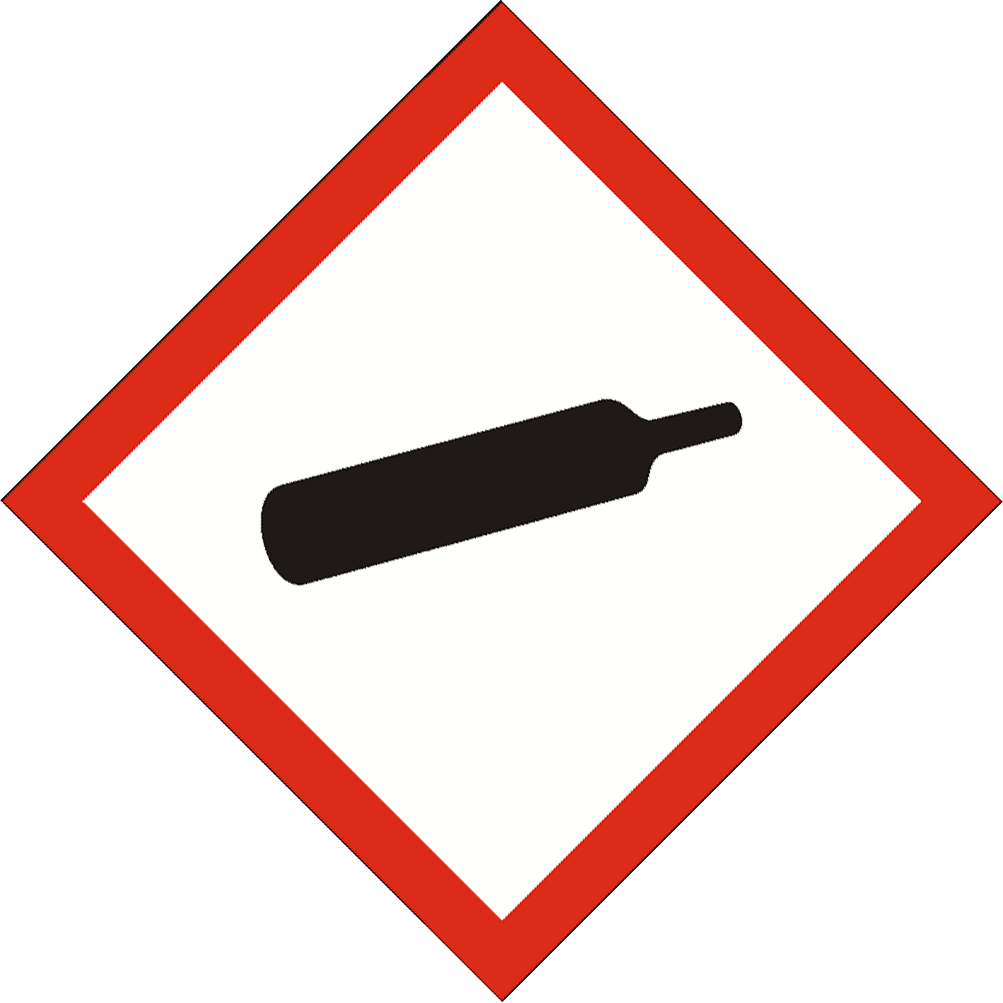 |
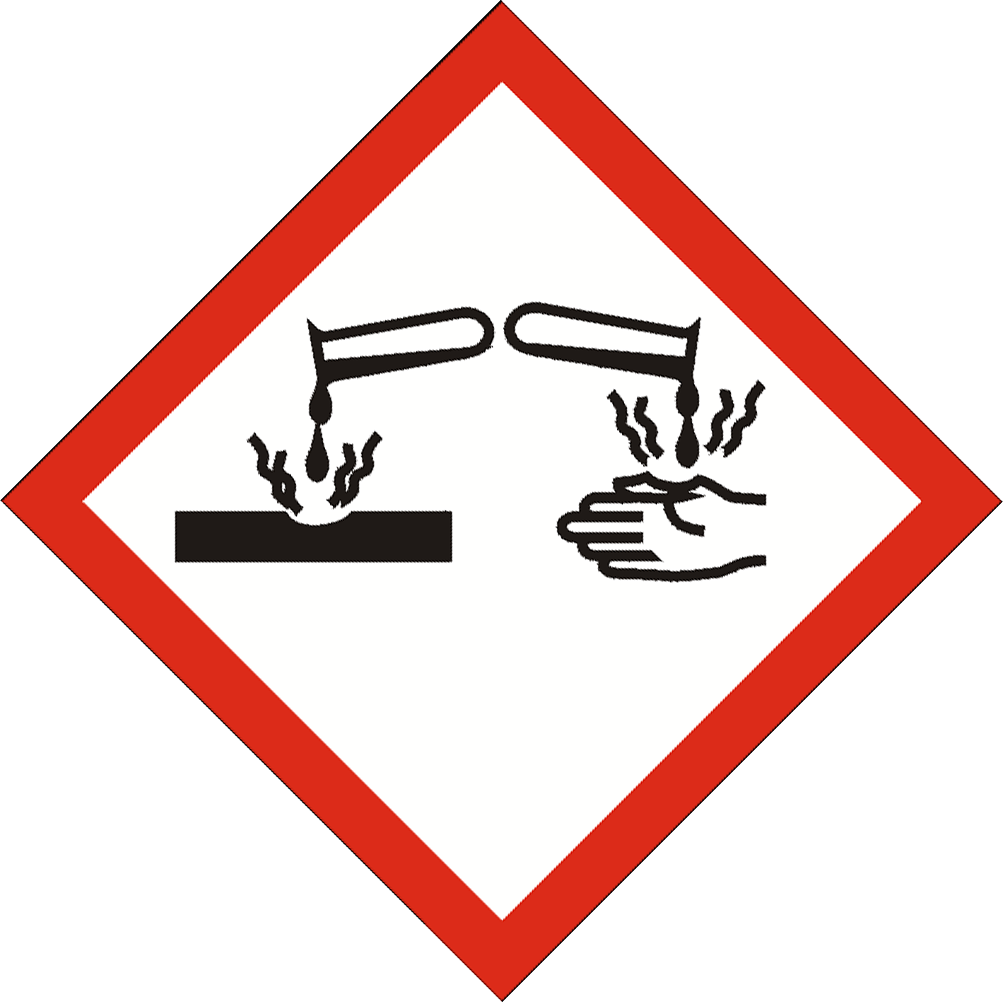 |
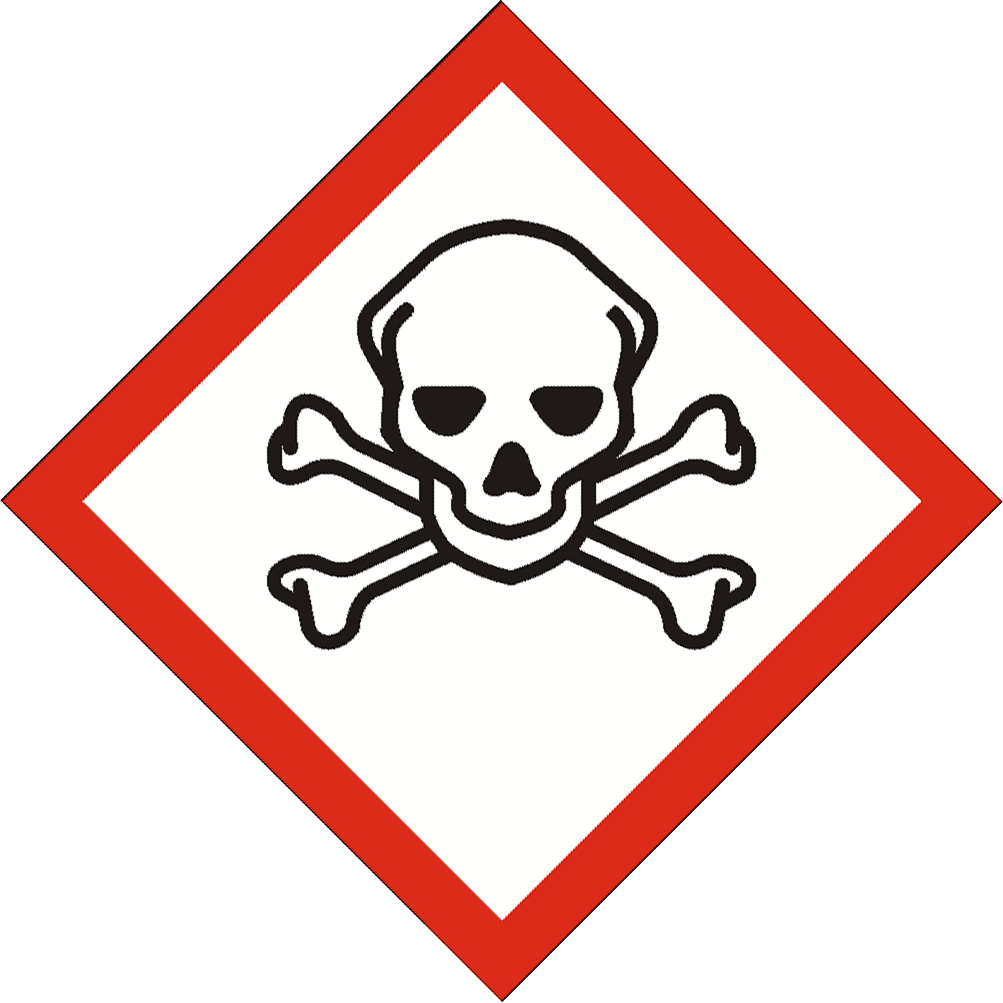 |
| GHS04 : Gas cylinder | GHS05 : Corrosion | GHS06 : Skull and crossbones |
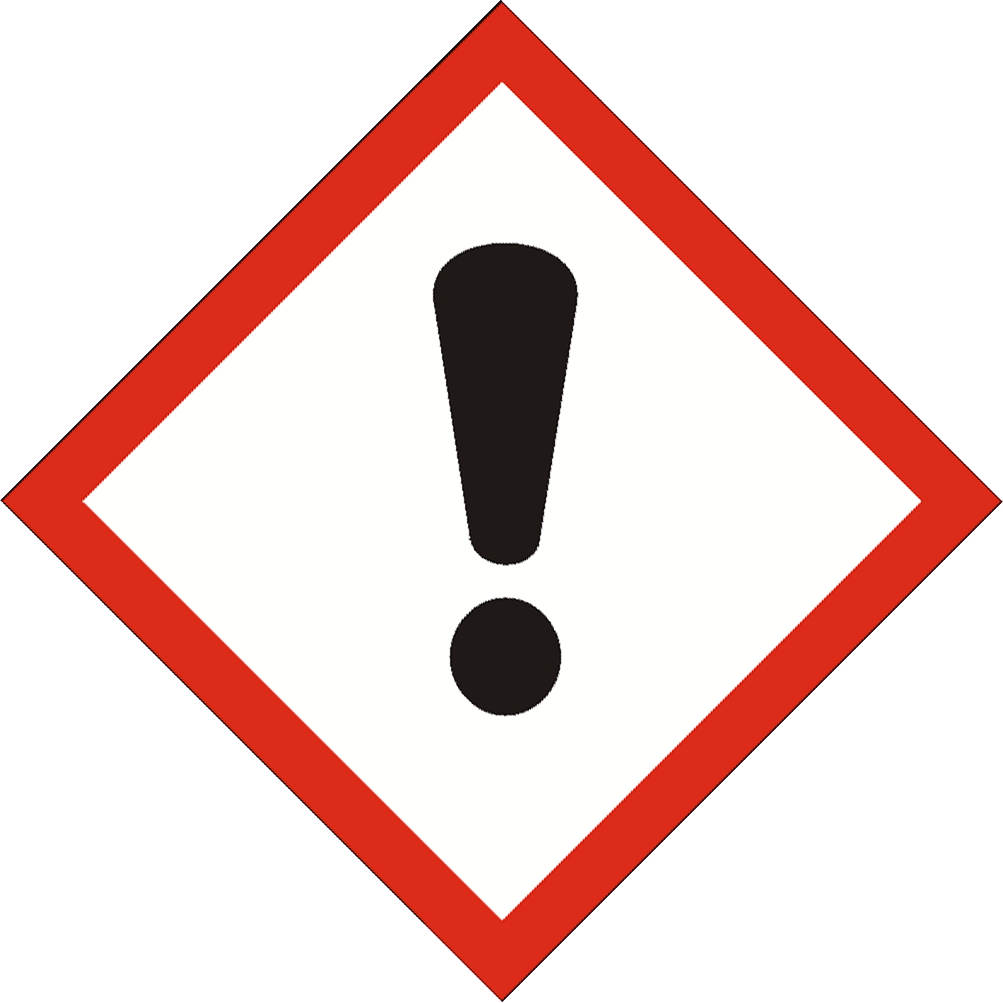 |
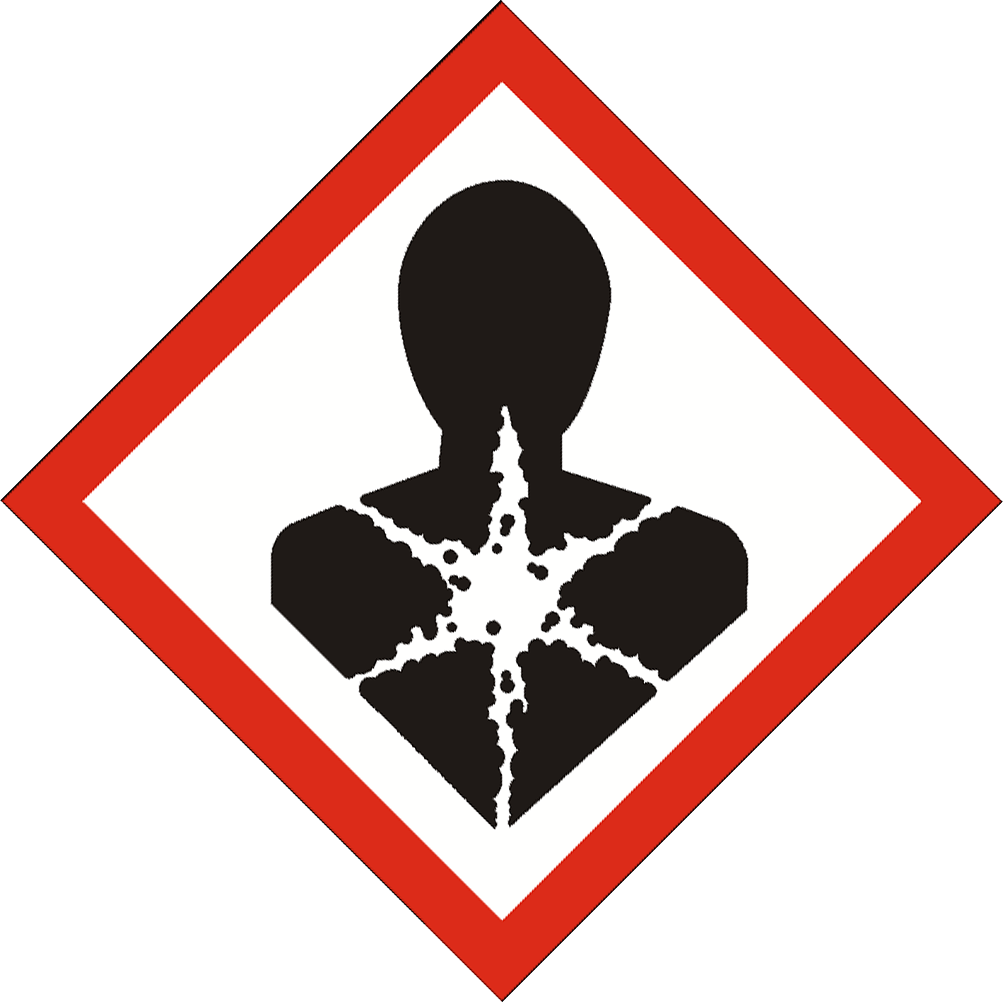 |
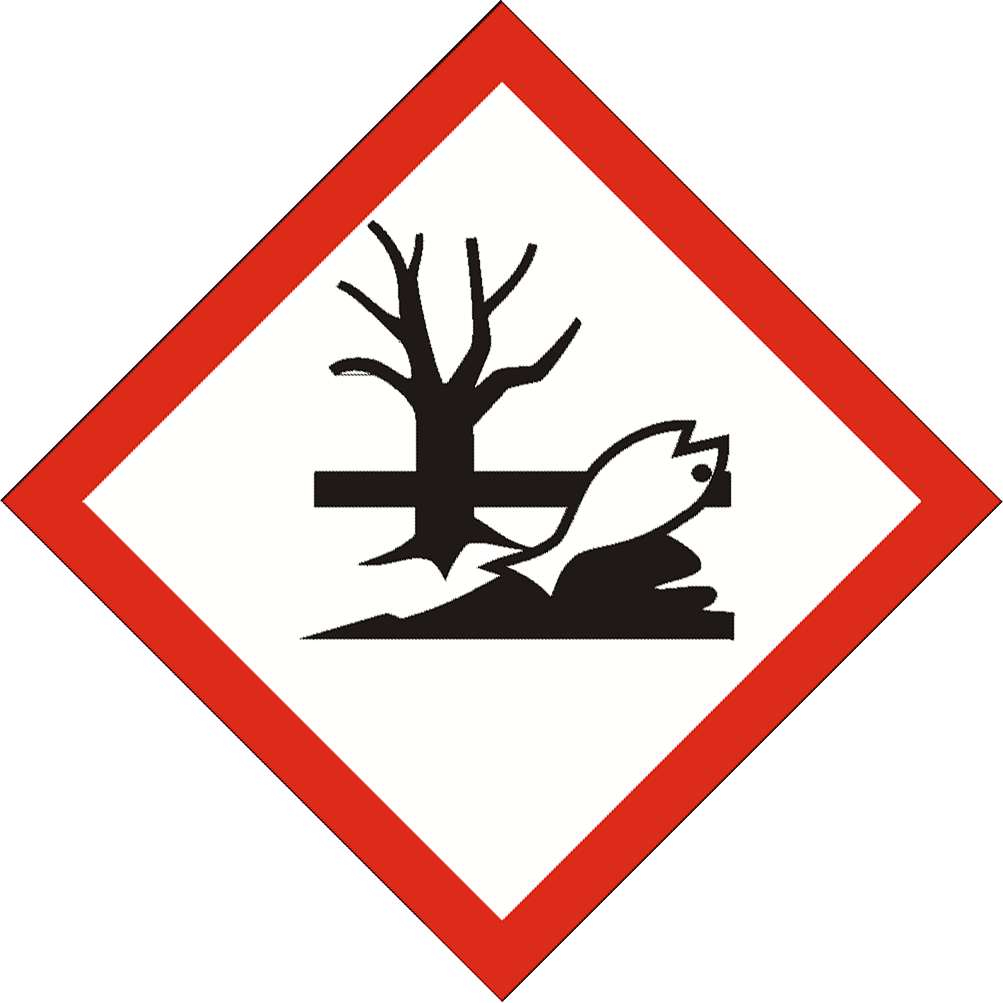 |
| GHS07 : Exclamation mark | GHS08 : Health hazard | GHS09 : Environment |
Signal word
A signal word means a word used to indicate the relative level of severity of hazard and alert the reader to a potential hazard on the label .
The signal words used in the GHS are:
DANGER or WARNING
Product identifiers
The label shall include details permitting the identification of the substance or mixture.
- For a substance, the product identifier contains an identification number according to very precise rules (the INDEX number if the substance appears in Annex VI of the CLP Regulation or the EC number or CAS number) and a chemical name.
- For a mixture, the product identifier contains the following elements :
- the trade name or the designation of the mixture
- the identity of all substances in the mixture that contribute to the classification of the mixture as regards acute toxicity, skin corrosion or serious eye damage, germ cell mutagenicity, carcinogenicity, reproductive toxicity, respiratory or skin sensitisation, specific target organ toxicity (STOT) or aspiration hazard.
Hazard Statement
A hazard statement means a phrase assigned to a hazard class and category that describes the nature of the hazards of a hazardous product, including, where appropriate, the degree of hazard.
Precautionary Statement Prevention
A precautionary statement means a phrase that describe recommended measuresthat should be taken to minimise or prevent adverse effects resulting from exposure to a hazardous product, or improper storage or handling of a hazardous product.
Additional hazard statements (Applicable only with the CLP classification)
Additional entries are assigned to substances and mixtures classified as a physical hazard, a health hazard or danger to the environment.
The supplemental label elements for certain mixtures (Applicable only with the CLP classification)
Some mixture require specific labeling elements.
Allocation of label elements
- Physico-chemical hazards
|
Hazard class
|
Category |
Hazard pictogram
|
Signal word
|
Hazard statement
|
|
Explosives
|
Unstable explosives
|
 |
Danger
|
H200: Unstable explosive
|
|
Division 1.1
|
 |
Danger
|
H201: Explosive; mass explosion hazard
|
|
|
Division 1.2
|
 |
Danger
|
H202: Explosive; severe projection hazard
|
|
|
Division 1.3
|
 |
Danger
|
H203: Explosive; fire, blast or projection hazard
|
|
|
Division 1.4
|
 |
Warning
|
H204: H204: Fire or projection hazard
|
|
|
Division 1.5
|
No pictogram |
Danger
|
H205: May mass explode in fire
|
|
|
Division 1.6
|
No pictogram |
|
Hazard class
|
Category |
Hazard pictogram
|
Signal word
|
Hazard statement
|
|
fFammable gases
|
Category 1
|
 |
Danger
|
H220: Extremely flammable gas
|
|
Category 2
|
Warning
|
H221: Flammable gas
|
||
|
Category A |
H230: May react explosively even in the absence of air.
|
|||
|
Category B |
H231: May react explosively even in the absence of air at elevated pressure and/or temperature.
|
|
Hazard class
|
Category |
Hazard pictogram
|
Signal word
|
Hazard statement
|
|
Aerosols |
Category 1
|
 |
Danger
|
H222: Extremely flammable aerosol |
|
Category 2
|
 |
Warning
|
H223: Flammable aerosol |
|
|
Category 3
|
Warning
|
H229: Pressurised container: May burst if heated.
|
|
Hazard class
|
Category |
Hazard pictogram
|
Signal word
|
Hazard statement
|
|
Oxidising gases
|
Category 1
|
 |
Danger
|
H270: May cause or intensify fire; oxidizer
|
|
Hazard class
|
Category |
Hazard pictogram
|
Signal word
|
Hazard statement
|
|
Gases under pressure
|
Compressed gas
|
 |
Warning
|
H280: Contains gas under pressure; may explode if heated
|
|
Liquefied gas
|
 |
Warning
|
H280: Contains gas under pressure; may explode if heated
|
|
|
Refrigerated liquefied
gas |
 |
Warning
|
H281: Contains refrigerated gas; may cause cryogenic burns or injury
|
|
|
Dissolved gas
|
 |
Warning
|
H280: Contains gas under pressure; may explode if heated
|
|
Hazard class
|
Category |
Hazard pictogram
|
Signal word
|
Hazard statement
|
|
Flammable liquids
|
Category 1
|
 |
Danger
|
H224: Extremely flammable liquid and vapour
|
|
Category 2
|
 |
Danger
|
H225: Highly flammable liquid and vapour
|
|
|
Category 3
|
 |
Warning
|
H226: Flammable liquid and vapour
|
|
|
Category 4
|
Warning
|
H227: Combustible liquid
|
|
Hazard class
|
Category |
Hazard pictogram
|
Signal word
|
Hazard statement
|
|
Flammable solids
|
Category 1
|
 |
Danger
|
H228: Flammable solid
|
|
Category 2
|
 |
Warning
|
H228: Flammable solid
|
|
Hazard class
|
Category |
Hazard pictogram
|
Signal word
|
Hazard statement
|
|
Self-reactive
substances and mixtures
|
Type A
|
 |
Danger
|
H240: Heating may cause an explosion
|
|
Type B
|
|
Danger
|
H241: Heating may cause a fire or explosion
|
|
|
Type C et D
|
 |
Danger
|
H242: Heating may cause a fire
|
|
|
Type E et F
|
 |
Warning
|
H242: Heating may cause a fire
|
|
|
Type G
|
|
Hazard class
|
Category |
Hazard pictogram
|
Signal word
|
Hazard statement
|
|
Pyrophoric liquids
|
Category 1
|
 |
Danger
|
H250: Catches fire spontaneously if exposed to air
|
|
Hazard class
|
Category |
Hazard pictogram
|
Signal word
|
Hazard statement
|
|
Pyrophoric solids
|
Category 1
|
 |
Danger
|
H250: Catches fire spontaneously if exposed to air
|
|
Hazard class
|
Category |
Hazard pictogram
|
Signal word
|
Hazard statement
|
|
Self-heating
substances and mixtures
|
Category 1
|
 |
Danger
|
H251: Self-heating; may catch fire
|
|
Category 2
|
 |
Warning
|
H252: Self-heating in large quantities; may catch fire
|
|
Hazard class
|
Category |
Hazard pictogram
|
Signal word
|
Hazard statement
|
|
Substances and mixtures
which in contact with water
emit flammable gases
|
Category 1
|
 |
Danger
|
H260: In contact with water releases flammable gases which may ignite spontaneously
|
|
Category 2
|
 |
Danger
|
H261: In contact with water releases flammable gas
|
|
|
Category 3
|
 |
Warning
|
H261: In contact with water releases flammable gas
|
|
Hazard class
|
Category |
Hazard pictogram
|
Signal word
|
Hazard statement
|
|
Oxidising liquids
|
Category 1
|
 |
Danger
|
H271: May cause fire or explosion; strong oxidizer
|
|
Category 2
|
 |
Danger
|
H272: May intensify fire; oxidizer
|
|
|
Category 3
|
 |
Warning
|
H272: May intensify fire; oxidizer
|
|
Hazard class
|
Category |
Hazard pictogram
|
Signal word
|
Hazard statement
|
|
Oxidising solids
|
Category 1
|
 |
Danger
|
H271: May cause fire or explosion; strong oxidizer
|
|
Category 2
|
 |
Danger
|
H272: May intensify fire; oxidizer
|
|
|
Category 3
|
 |
Warning
|
H272: May intensify fire; oxidizer
|
|
Hazard class
|
Category |
Hazard pictogram
|
Signal word
|
Hazard statement
|
|
Organic peroxides
|
Type A
|
 |
Danger
|
H240: Heating may cause an explosion
|
|
Type B
|
|
Danger
|
H241: Heating may cause a fire or explosion
|
|
|
Type C et D
|
 |
Danger
|
H242: Heating may cause a fire
|
|
|
Type E et F
|
 |
Warning
|
H242: Heating may cause a fire
|
|
|
Type G
|
|
Hazard class
|
Category |
Hazard pictogram
|
Signal word
|
Hazard statement
|
|
Corrosive to metals
|
Category 1
|
 |
Warning
|
H290: May be corrosive to metals
|
- Health hazards
|
Hazard class
|
Category |
Hazard pictogram
|
Signal word
|
Hazard statement
|
|
Acute toxicity: oral
|
Category 1
|
 |
Danger
|
H300: Fatal if swallowed
|
|
Category 2
|
 |
Danger
|
H300: Fatal if swallowed
|
|
|
Category 3
|
 |
Danger
|
H301: Toxic if swallowed
|
|
|
Category 4
|
 |
Warning
|
H302: Harmful if swallowed
|
|
|
Category 5
|
Warning
|
H303: May be harmful if swallowed |
|
Hazard class
|
Category |
Hazard pictogram
|
Signal word
|
Hazard statement
|
|
Acute toxicity: skin
|
Category 1
|
 |
Danger
|
H310: Fatal in contact with skin
|
|
Category 2
|
 |
Danger
|
H310: Fatal in contact with skin
|
|
|
Category 3
|
 |
Danger
|
H311: Toxic in contact with skin
|
|
|
Category 4
|
 |
Warning
|
H312: Harmful in contact with skin
|
|
|
Category 5
|
Warning
|
H313: May be harmful in contact with skin |
|
Hazard class
|
Category |
Hazard pictogram
|
Signal word
|
Hazard statement
|
|
Acute toxicity: inhalation
|
Category 1
|
 |
Danger
|
H330: Fatal if inhaled
|
|
Category 2
|
 |
Danger
|
H330: Fatal if inhaled
|
|
|
Category 3
|
 |
Danger
|
H331: Toxic if inhaled
|
|
|
Category 4
|
 |
Warning
|
H332: Harmful if inhaled
|
|
|
Category 5
|
Warning
|
H333: May be harmful if inhaled |
|
Hazard class
|
Category |
Hazard pictogram
|
Signal word
|
Hazard statement
|
|
Skin corrosion/irritation
|
Category 1A
|
 |
Danger
|
H314: Causes severe skin burns and eye damage
|
|
Category 1B
|
 |
Danger
|
H314: Causes severe skin burns and eye damage
|
|
|
Category 1C
|
 |
Danger
|
H314: Causes severe skin burns and eye damage
|
|
|
Category 2
|
 |
Warning
|
H315: Causes skin irritation
|
|
|
Category 3
|
Warning
|
H316: Causes mild skin irritation
|
|
Hazard class
|
Category |
Hazard pictogram
|
Signal word
|
Hazard statement
|
|
Serious eye damage/eye irritation
|
Category 1
|
 |
Danger
|
H318: Causes serious eye damage
|
|
Category 2A
|
 |
Warning
|
H319: Causes serious eye irritation
|
|
|
Category 2B
|
Warning
|
H320: Causes eye irritation
|
|
Hazard class
|
Category |
Hazard pictogram
|
Signal word
|
Hazard statement
|
|
Respiratory sensitisation
|
Category 1
|
 |
Danger
|
H334: May cause allergy or asthma symptoms or breathing difficulties if inhaled
|
|
Category 1A
|
 |
Danger
|
H334: May cause allergy or asthma symptoms or breathing difficulties if inhaled
|
|
|
Category 1B
|
 |
Danger
|
H334: May cause allergy or asthma symptoms or breathing difficulties if inhaled
|
|
Hazard class
|
Category |
Hazard pictogram
|
Signal word
|
Hazard statement
|
|
Skin sensitisation
|
Category 1
|
 |
Warning
|
H317: May cause an allergic skin reaction
|
|
Category 1A
|
 |
Warning
|
H317: May cause an allergic skin reaction
|
|
|
Category 1B
|
 |
Warning
|
H317: May cause an allergic skin reaction
|
|
Hazard class
|
Category |
Hazard pictogram
|
Signal word
|
Hazard statement
|
|
Germ cell mutagenicity
|
Category 1A
|
 |
Danger
|
H340: May cause genetic defects (*)
|
|
Category 1B
|
 |
Danger
|
H340: May cause genetic defects (*)
|
|
|
Category 2
|
 |
Warning
|
H341: Suspected of causing genetic defects (*)
|
(*) state route of exposure if it is conclusively proven that no other routes of exposure cause the hazard..
|
Hazard class
|
Category |
Hazard pictogram
|
Signal word
|
Hazard statement
|
|
Carcinogenicity
|
Category 1A
|
 |
Danger
|
H350: May cause cancer (*)
|
|
Category 1B
|
 |
Danger
|
H350: May cause cancer (*)
|
|
|
Category 2
|
 |
Warning
|
H351: Suspected of causing cancer (*)
|
(*) state route of exposure if it is conclusively proven that no other routes of exposure cause the hazard.
|
Hazard class
|
Category |
Hazard pictogram
|
Signal word
|
Hazard statement
|
|
Reproductive toxicity
|
Category 1A
|
 |
Danger
|
H360: May damage fertility or the unborn child (*)
|
|
Category 1B
|
 |
Danger
|
H360: May damage fertility or the unborn child (*)
|
|
|
Category 2
|
 |
Warning
|
H361: Susceptible de nuire à la fertilité ou au foetus (*)
|
|
|
Additional category
for effects on or via lactation |
H362: Suspected of damaging fertility or the unborn child
|
(*) state route of exposure if it is conclusively proven that no other routes of exposure cause the hazard.
|
Hazard class
|
Category |
Hazard pictogram
|
Signal word
|
Hazard statement
|
|
Specific target organ toxicity
single exposure
|
Category 1
|
 |
Danger
|
H370: Causes damage to organs (**) (*)
|
|
Category 2
|
 |
Warning
|
H371: May cause damage to organs (**) (*)
|
|
|
Category 3
|
 |
Warning
|
(Respiratory tract irritation) ou (Narcotic effects) |
(*) state route of exposure if it is conclusively proven that no other routes of exposure cause the hazard.
(**) state all organs affected, if known.
|
Hazard class
|
Category |
Hazard pictogram
|
Signal word
|
Hazard statement
|
|
Specific target organ toxicity
repeated exposure
|
Category 1
|
 |
Danger
|
H372: Causes damage to organs (**) through prolonged or repeated exposure (*)
|
|
Category 2
|
 |
Warning
|
H373: May cause damage to organs (**) through prolonged or repeated exposure (*)
|
(*) state route of exposure if it is conclusively proven that no other routes of exposure cause the hazard.
(**) state all organs affected, if known.
|
Hazard class
|
Category |
Hazard pictogram
|
Signal word
|
Hazard statement
|
|
Aspiration hazard
|
Category 1
|
 |
Danger
|
H304: May be fatal if swallowed and enters airways
|
|
Category 2
|
 |
Warning
|
H305: May be harmful if swallowed and enters airways
|
- Environmental hazards
|
Hazard class
|
Category |
Hazard pictogram
|
Signal word
|
Hazard statement
|
|
Hazardous to the aquatic environment (Acute)
|
Category 1
|
 |
Warning
|
H400: Very toxic to aquatic life
|
|
Category 2
|
H401: Toxic to aquatic life
|
|||
|
Category 3
|
H402: Harmful to aquatic life
|
|
Hazard class
|
Category |
Hazard pictogram
|
Signal word
|
Hazard statement
|
|
Hazardous to the aquatic environment (Chronic)
|
Category 1
|
 |
Warning
|
H410: Very toxic to aquatic life with long lasting effects
|
|
Category 2
|
 |
H411: Toxic to aquatic life with long lasting effects
|
||
|
Category 3
|
H412: Harmful to aquatic life with long lasting effects
|
|||
|
Category 4
|
H413: May cause long lasting harmful effects to aquatic life
|


